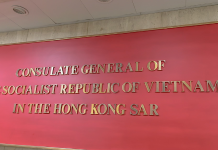But for the medical application of 3D printing to really take off, Mak thinks there needs to be more private sector investment. Universities currently pioneer this kind of research, but it is important to have industrial partners to promote the technology. However, the risk of potential losses and the huge start-up funds needed put industrialists off. “Hong Kong industry still demands [to see] immediate benefit,” Mak sighs.
The Hong Kong Productivity Council (HKPC) has been involved in the research and application of 3D-printing technology, and may become a bridge between the innovators and the industry. Bryan So, principal consultant in the Biomedical Optical and Precision Engineering Division, says the council is working with doctors who conduct research on the technology to help commercialise their achievements and recommend possible business models. For example, HKPC has joined up with the University of Hong Kong to design artificial finger joints and introduce the designs to manufacturers. “This is a new business and we are still exploring the path to run it, but it will be a growth industry,” he says.
Apart from Hong Kong, many countries are stepping up their efforts to apply 3D printing into biomedical research and surgery. In May, Singapore’s Nanyang Technological University opened a US$30 million 3D printing research centre to conduct research on bone regeneration and bioengineering. It also signed a $5 million joint laboratory agreement with a German 3D printer manufacturer at the launch. Last year, a research team in the US managed to print parts of a functioning human heart with blood vessels. Scientists predict it will be possible to print an entire organ in three to five years and testing on humans will begin in less than a decade.
3D printing could turn elements of science fiction into reality. Hong Kong will need to redouble research efforts to keep up with the global advances in the technology if it wants to be part of what may evolve into a multi-billion dollar business that could also save lives.
Edited by Cindy Ng






































